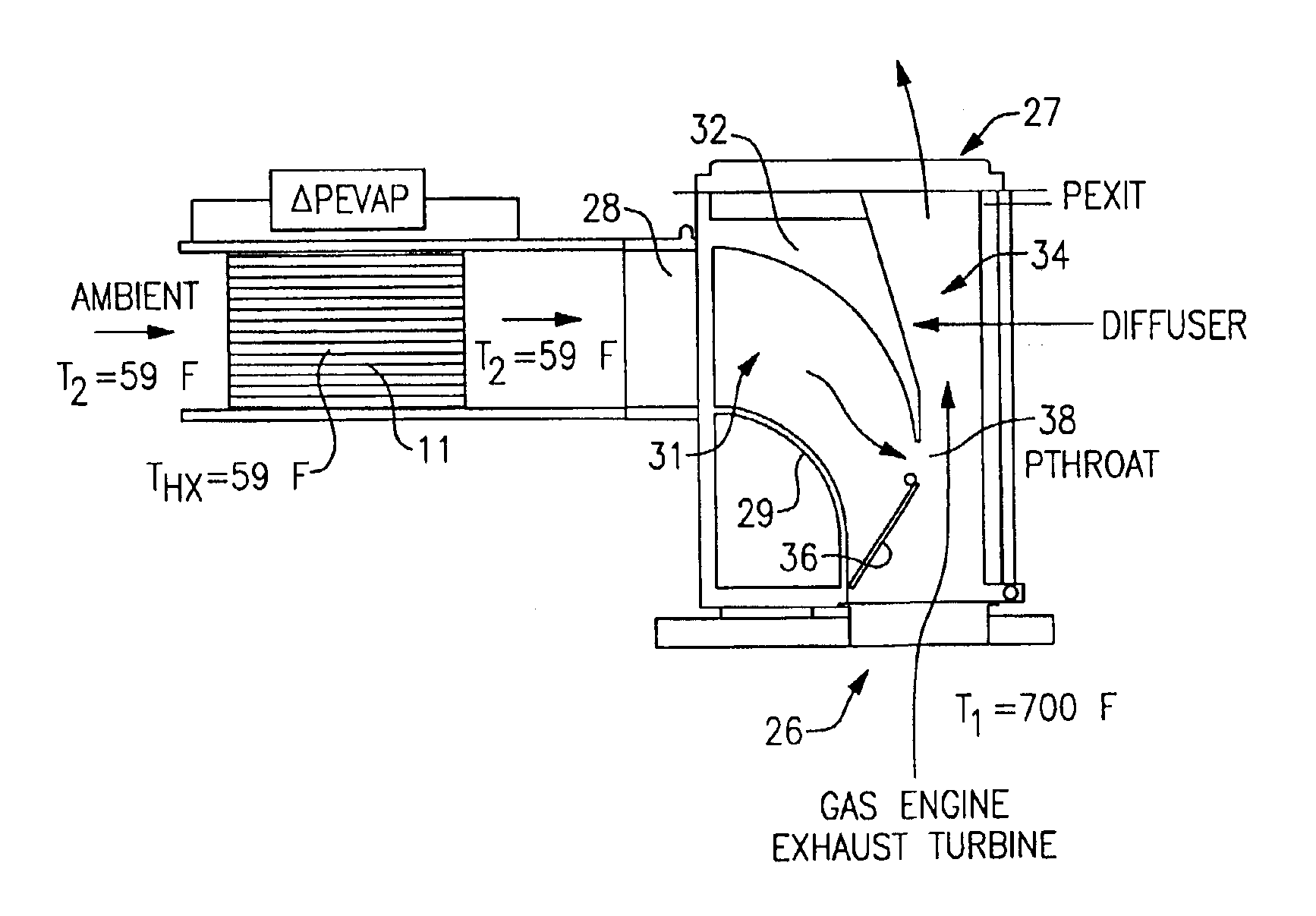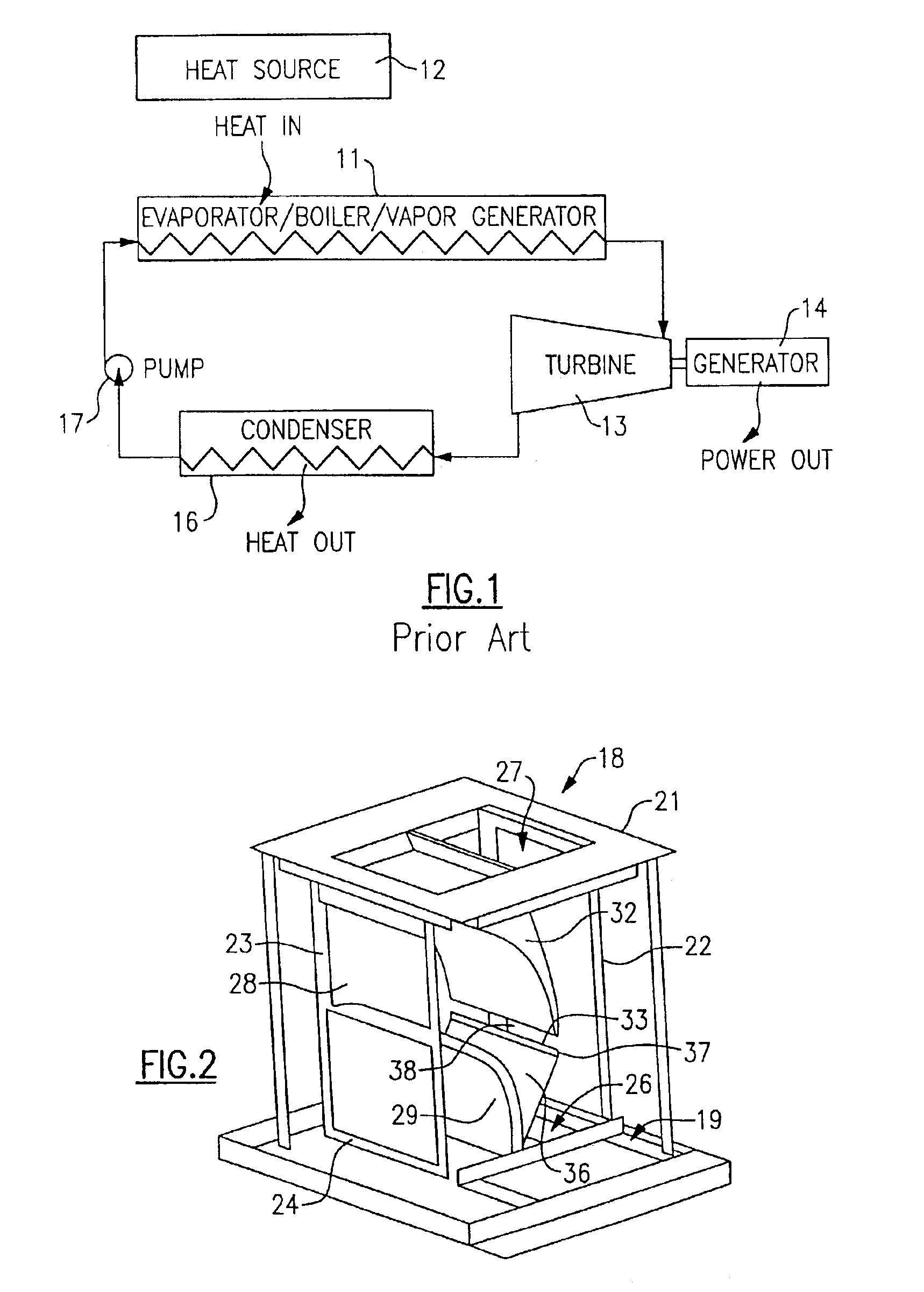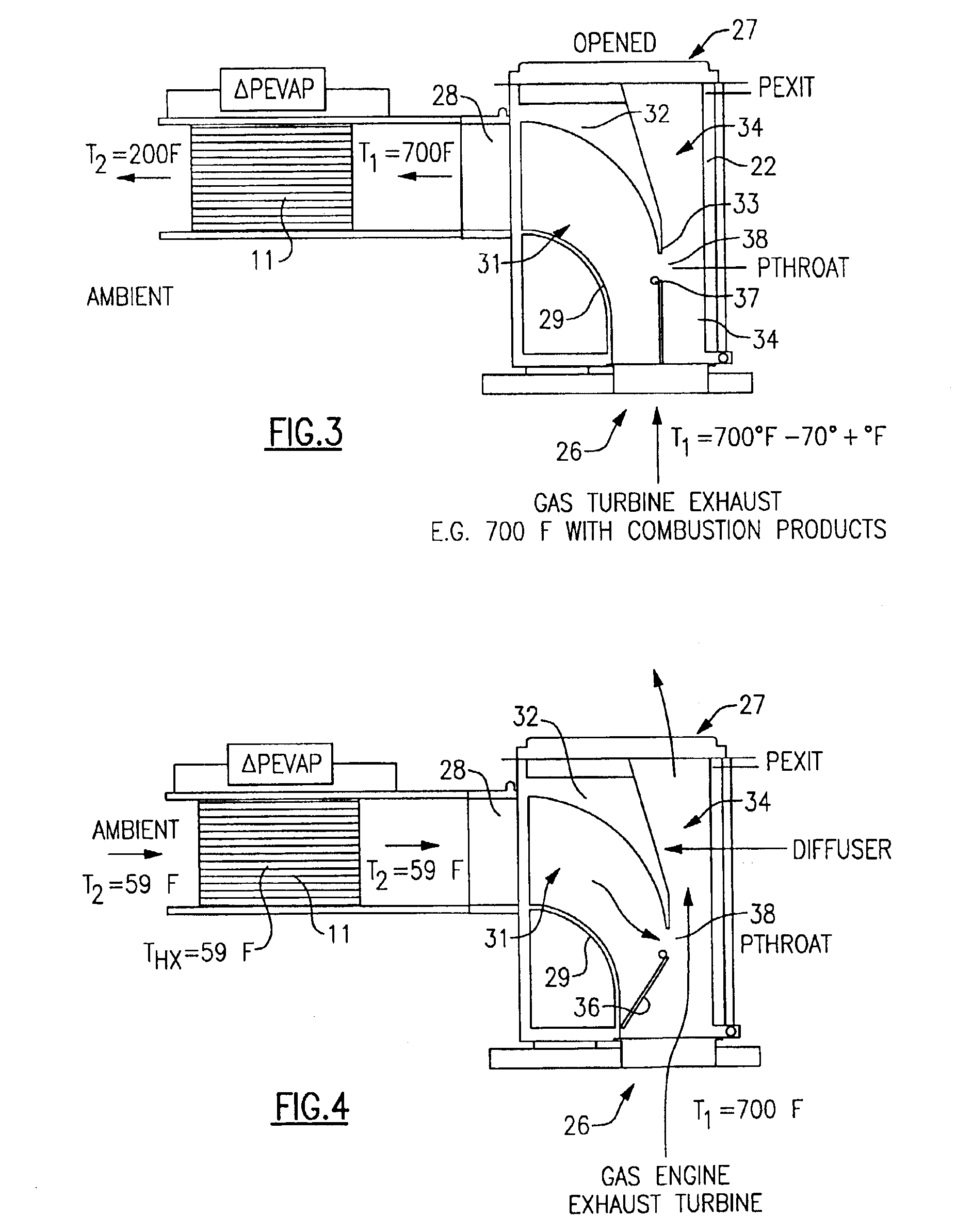Control of flow through a vapor generator
a technology of vapor generator and control valve, which is applied in the direction of steam generation using hot heat carriers, machines/engines, lighting and heating apparatus, etc., can solve the problems of high temperature, high temperature, and high temperature of natural gas combustion or diesel fuel hot gases, so as to prevent excessive temperatures
- Summary
- Abstract
- Description
- Claims
- Application Information
AI Technical Summary
Benefits of technology
Problems solved by technology
Method used
Image
Examples
Embodiment Construction
[0024]Referring now to FIG. 1, a typical Rankine cycle system is shown to include an evaporator / boiler / vapor generator 11 which receives heat from a heat source 12 to generate high temperature vapor and provide motive power to a turbine 13 which in turn drives a generator 14 to produce power. Upon leaving the turbine 13, the relatively low pressure vapor passes to the condenser 16 where it is condensed by way of heat exchange relationship with a cooling medium. The condensed liquid is then circulated to the evaporator by a pump 17 as shown to complete the cycle. The motive fluid in such Rankine cycle system is commonly water but may also be a refrigerant, in which case it is referred to as anorganic Rankine cycle (ORC).
[0025]Such an organic Rankine cycle system is susceptible to three possible problems. Firstly, if the pump 17 fails, then the temperature of the refrigerant can rise to excessive levels. Secondly, if the gases from the heat source 12 are at too high a temperature, the...
PUM
 Login to View More
Login to View More Abstract
Description
Claims
Application Information
 Login to View More
Login to View More - Generate Ideas
- Intellectual Property
- Life Sciences
- Materials
- Tech Scout
- Unparalleled Data Quality
- Higher Quality Content
- 60% Fewer Hallucinations
Browse by: Latest US Patents, China's latest patents, Technical Efficacy Thesaurus, Application Domain, Technology Topic, Popular Technical Reports.
© 2025 PatSnap. All rights reserved.Legal|Privacy policy|Modern Slavery Act Transparency Statement|Sitemap|About US| Contact US: help@patsnap.com



